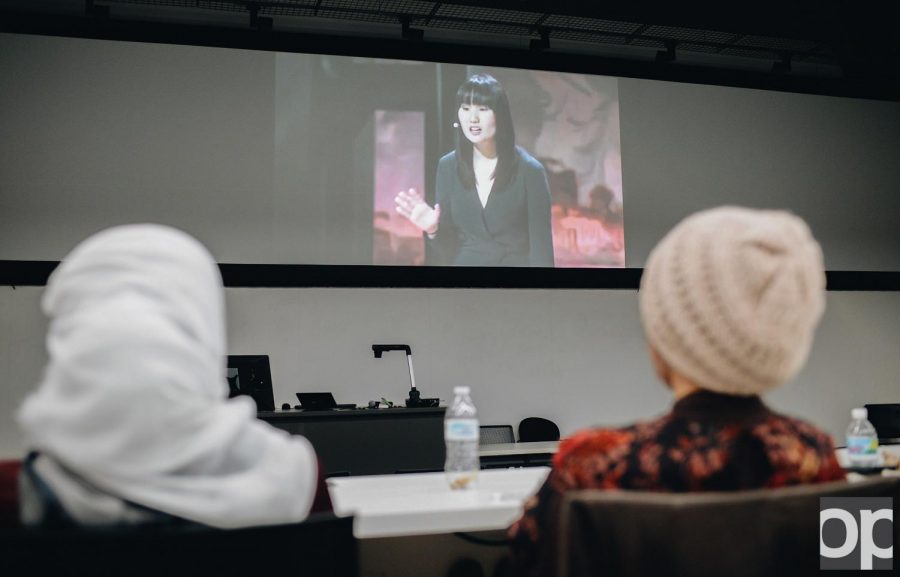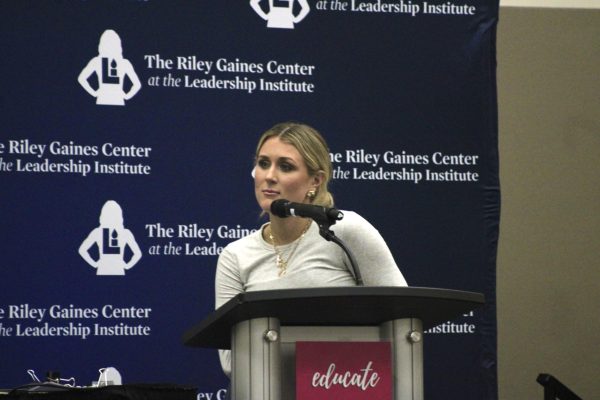A legacy for generations to come
TEDx at Oakland hosted a livestream of trailblazing women from the national conference in New Orleans.
Instilling confidence in girls and women is powerful. Today, we know it is the key to economic growth, political stability and social transformation.
The TEDxOaklandUniversity organization on campus hosted two livestream sessions of TED’S famous Women 2017 Bridges National Conference that took place in New Orleans, La. on Nov. 3 and gave a glimpse into the bold future of female trailblazers.
The program was hosted by physician as well as United Nations High Commissioner, Alaa Murabit, who focused specifically on design.
“I always thought design was about externally pleasing aesthetics,” she said. “But what you’ll learn from speakers in this session is that design isn’t just about how great something looks — but how well it works.”
The first speaker of the design session was Amanda Phingbodhipakkiya. While growing up, she watched her father gain business at his Thai restaurant and encourage customers to embrace the unfamiliar. As she grew up, she began to apply that idea to activism.
Her own experiments have resulted in the creation of Beyond Curie, a series of illustrations highlighting historical successful women in STEM fields.
Most recently, Phingbodhipakkiya started a fashion line called ATOMIC by Design that encourages women and girls to express their love of science while expressing themselves through clothing.
During her presentation Nadine Hachach-Haram, a surgeon, lecturer and clinical entrepreneur, was actually helping a Minnesota-based surgeon drill into a patient’s knee while using her webcam technology software called Proxima to provide direction and feedback on what the surgeon should do next.
Hachach-Haram extrapolated on the idea that remote yet collaborative surgeries such as the one she was helping perform live can provide the next wave of surgical innovation.
Next was Anushka Naiknaware, who became the youngest person to win the Google Science Fair at just 13 years old. To win the prestigious award, Naiknaware designed a sensor that tracked wound healing. She was passionately driven by how the world worked and that drive enabled her to learn that wounds caused by pre-existing conditions such as diabetes heal in their own way.
Naiknaware worked in her garage while combining science, math and biology to create a sensor that wirelessly delivered wound information to both patient and doctor.
When doctors nag their patients to go to the gym in order to enhance their mental and physical health, it’s for a valid reason. After signing up for a gym membership, neuroscientist Wendy Suzuki noticed improvement in her memory and focus. This shift led her to make a change in her professional focus to researching the impact of exercise on the brain.
Suzuki concluded that exercise transforms our brains in three primary ways. First, it increases levels of neurotransmitters that affect our mood. Second, it has long-term impact on the brain’s anatomy, physiology and function. Third, it helps protect our brain from neurodegenerative diseases.
The various women who presented at the TEDWomen Conference are some of the smartest and toughest female business leaders, entrepreneurs, investors, scientists, philanthropists and CEOs making their mark in the world.
These women have the power to influence and, in doing so, will leave a legacy for generations to come.







